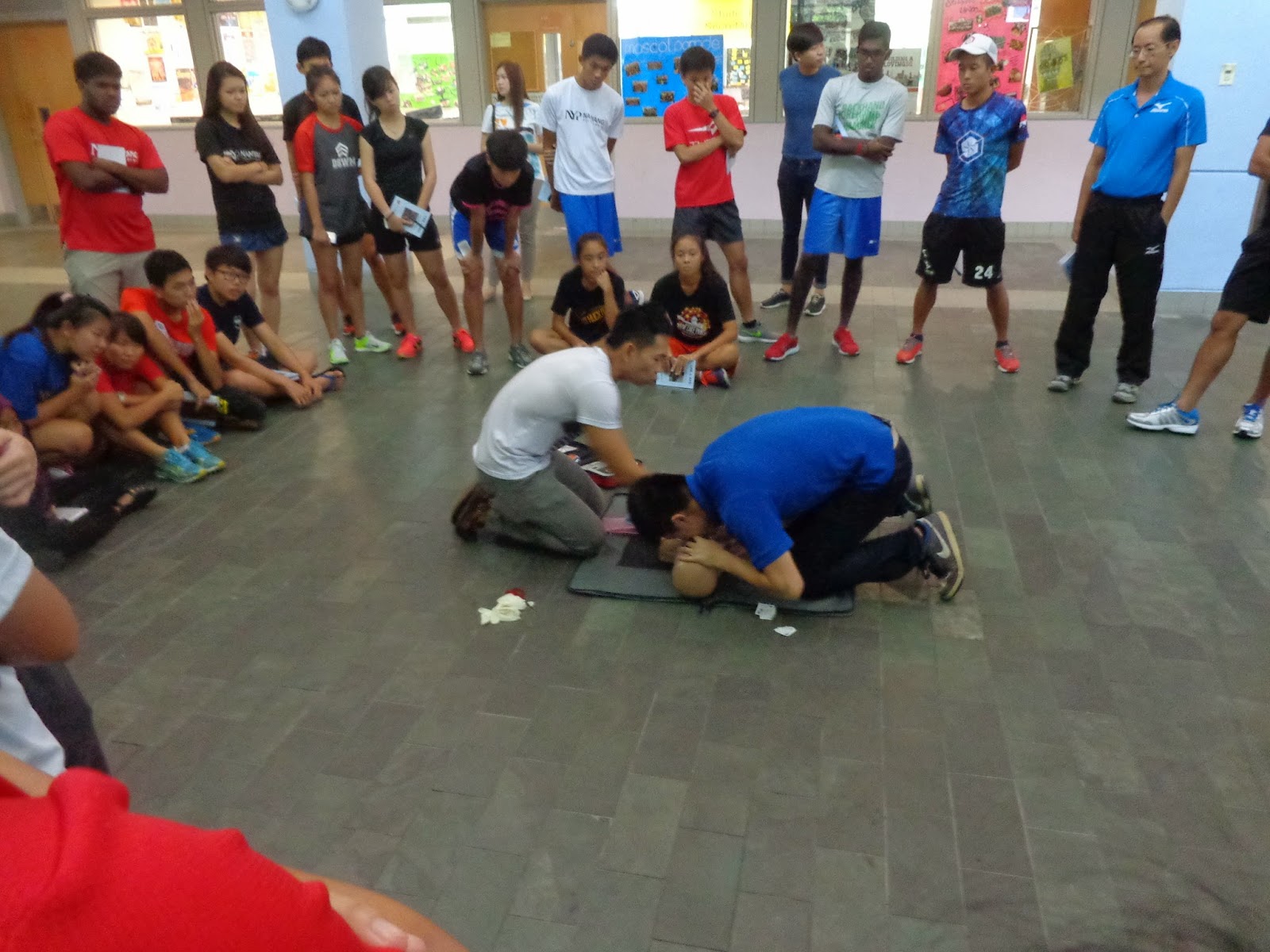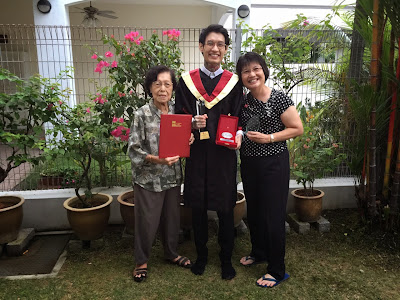Learning First Aid, CPR, and more!
On Tuesday, April 14, 2015, from 9am to 5pm, more than 70 NYP students, including myself, attended the Standard First Aider and CPR & AED Workshop at Block E.
I heard about this workshop through the Student Affairs Office, which sent us an email encouraging us to go for it. I thought it would be beneficial to learn more about first aid and life-saving procedures, and decided to sign up for it.
The fully subsidized workshop was organized by the People�s Association Emergency Preparedness Division. It was open to all students, but I noticed it attracted many students from the Track and Field team, and Sports and Wellness diploma course.
The Standard First Aid Workshop was held concurrently with the CPR + AED Workshop. Hence, the students were split into two different groups, and switched groups later. The first workshop I attended was the Standard First Aid Workshop, conducted by Mr Safaruddin Bin Haji Aliyas, a facilitator from the Singapore First Aid Training Centre Pte Ltd.
At the beginning of the workshop, Mr Safar, our instructor, taught us about the the aims of First Aid, which are: to preserve life, prevent worsening of condition, promote recovery, and provide pain relief and reassurance.
The role and responsibilities of a first aider include rendering first aid until medical help arrives, keeping records of injuries, knowing the possible hazards, helping in accident prevention, and recording all treatment in the injury report. During the workshop, we also learnt about the different types of bandages for fractures and dislocations, and how to stop external bleeding.
Here is an illustration of how the Broad and Narrow bandages are folded
The Broad and Narrow bandages are called triangular bandages because of their shape. They are used to secure the dressing in one location. It is easy to maneuver this bandage because it can be easily applied to any body part. One of the benefits is that it can be easily folded into any size and is versatile to use.
These are some of the skills we learnt:
Stopping external bleeding
In order to stop external bleeding, firstly, we have to apply direct pressure on the wound. Then, we have to ensure the crepe bandage is wrapped firmly around the patient�s limb. Lastly, we have to stabilize the injured limb with a triangular bandage.
Bandaging a �patient� with external bleeding on the arm
If the bleeding soaks through the bandage, do not remove it but add more items like gauze or clean t-shirts and towels, and maintain firm pressure. Call 995 as soon as possible.
Using the triangular bandage
Splinting a fractured lower arm
Firstly, assist the patient into a comfortable position, usually sitting down. A pillow or rolled-up clothing may be placed on the lap to provide support for the patient to rest his injured arm.
Secondly, create a splint, using a firmly rolled newspaper folded into a gutter shape, and place it under the injured arm. Thirdly, secure the splint in place with a narrow-fold bandage, adding additional bandages if necessary. Lastly, apply an arm sling for additional support and stability.
Splinting a fractured lower arm
Treatment of a dislocated shoulder joint
A dislocated shoulder and fractured collarbone are managed in a similar way because both injuries affect the shoulder joint. The patient needs to support the arm with the shoulder injury, with his head tilted towards the injury. The patient is usually in severe pain and any unnecessary movement should be avoided.
If ambulance transport is delayed, carefully immobilise the arm by placing padding under the armpit and apply an elevation sling or an arm sling depending on the patient�s preferred position.
Here�s how to bandage a patient with shoulder dislocation
At the end of this workshop, we learned how to recognize the signs and symptoms of emergencies, illnesses and injuries, and perform the necessary and correct first aid treatment on casualties.
CPR + AED Workshop
After lunch, we proceeded to the next workshop.
The CPR + AED Workshop aims to equip participants with the knowledge and skills to perform Cardio-Pulmonary Resuscitation (CPR) using the Automated External Defibrillator (AED) machine. This workshop was conducted by Mr Abdul Karim, a chief instructor from Medi Life Saving Training Centre.
At the beginning of the workshop, we were given a demonstration of cardio pulmonary resuscitation.
A cardio-pulmonary resuscitation demonstration
After the demonstration, we proceeded to learn how to provide CPR to an adult, and how to use the AED effectively and safely during an emergency. We also learned the Chain of Survival process, the standards for proper chest compression, the AED protocol, the CPR protocol, and more about Cardiac Arrest; its causes, prevention, and signs and symptoms.
After learning all the theory, we had a short theory test on the procedures we learnt during the workshop. After the test, we formed small groups and were tested on performing CPR effectively on a mannequin.
My group performing cardio-pulmonary resuscitation on a mannequin
Hanafi Bin Sedik, a Year 3 Engineering Informatics student, who was a participant, said: �I found the workshop interesting especially the hands on session. I learnt useful lifesaving skills which can come in handy as you�ll never know when you will need it.�
As for myself, I definitely enjoyed my day learning more about all the different kinds of medical emergencies, illnesses, injuries and their causes. It was a long day, but a useful one.
By Tay Jia Min, Diploma in Electrical Engineering with Eco Design.
Jia Min is doing her Diploma in Electrical Engineering with Eco- Design. Other than reading novels and watching television shows, she also enjoys folding origami and listening to music during her free time.



.JPG)







Comments
Post a Comment